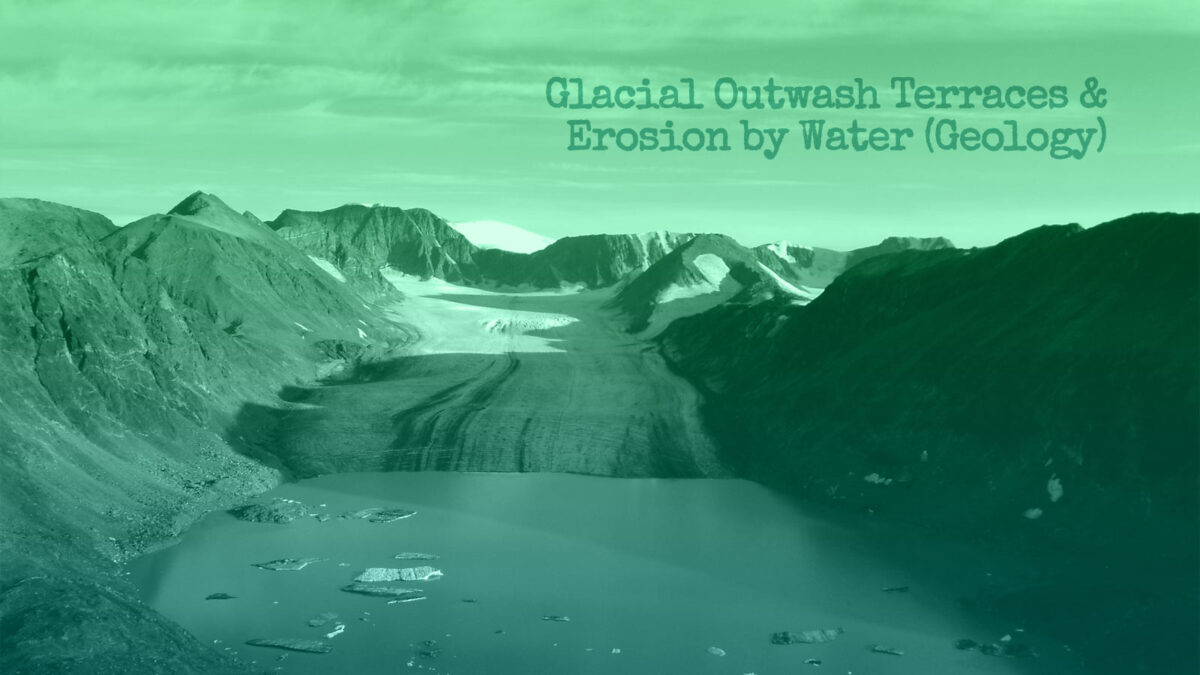Outwash Terraces
During a glacial period, glaciers move on account of gravity causing them to pick up loose rocks and other such material. This material is gathered into a formation called a glacial moraine, which is not related to the rocks that it overlies. Some of these collected materials however are washed away from the glacier as it melts. This escaping sediment is called outwash, and forms a separate formation downhill of the glacier.
When an inter-glacial period begins its cycle, the glacier begins to melt leaving with it large amounts of rock and soil that it had accumulated. These rock formations are then down cut by rivers flowing threw them. As the next glacial period arrives, another glacier is formed and the same process begins again. Moving downhill on account of gravity, this same occurrence happens once again leaving a new formation of rocks to be down cut by a river. This new formation however, is always lower than the one that the previous glacier had produced.
In this way, glacial outwash terraces defy the law of stratigraphic superposition, which states that the overlying rocks are always the oldest. In the case of outwash terraces, the youngest formations lie below older outwash formations.
Erosion by Water
As water flows over land that is slightly elevated in one direction, it has the tendency to randomly turn and curve, or meander. The streams created by the meandering of these water bodies are called meandering streams and are what create channels. The constant flow of water moves sediment down stream, thus the down cutting into the strata that lies beneath begins. Because of their appearance, meandering streams are commonly referred to as braided streams. These intricate bodies of water flow in and out, weaving through and around each other.
| MEANDERING STREAMS (figure missing) | BRAIDED STREAMS (figure missing) |
Meandering streams have the capacity of carrying large amounts of sediment down-river resulting in erosion. As the water flows past, some grains are moved along the bottom of the stream due to the current. This movement of particles is called the bed load. The suspended load, however, is composed of such fine sediment particles that they are carried by the water, suspended in it and traveling with it.
In meandering streams there are always different spots of strongest current. The strong currents in these places subsequently result in the deepest areas. An example of this process is the bank of a meander where the water is rushing the fastest due to the swift direction change. In these banked areas there is typically an area of greater depth called pools due to the increased speed of current in these areas.
| BANKS AND POOLS OF MEANDERING STREAMS (figure missing) |
High levels of current can also result in the redirection of a channel. High energy levels typically move towards the path of least resistance, or the more direct path. Old channel paths are often cut off due to elevated flow and new direct channel paths are created. This shifting process often creates point bars between the old and the new channels.
Stream Piracy is defined as a jump in channels. This occurs when one channel steals another ricer into its channel. If a bank is slowly eroded which separates an abandoned channel from a running river, there is high potential that the flow of the river will be redirected into the abandoned channel.

